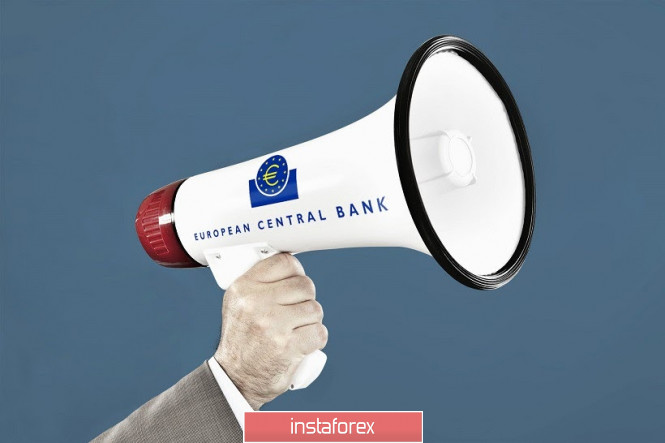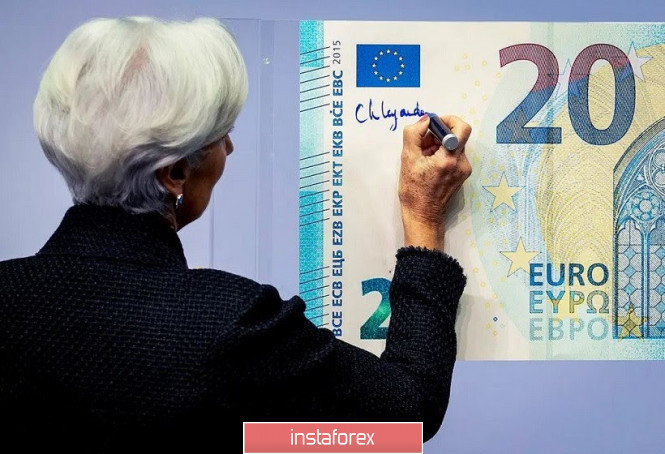The euro-dollar pair is growing, as they say, "not by the day, but by the hour": the price was able not only to stay within the 12th figure today, but also to update the three-month high along the way. Buyers, apparently, intend to test the resistance level 1.1270 (the upper line of the Bollinger Bands indicator on the weekly chart) in the near future, thereby confirming a trend reversal. And yet, despite the clear dominance of the bulls, buying now looks risky, especially in the context of the medium term. Tomorrow's meeting of the ECB may turn the attention of traders from American events, while the rhetoric of the head of the European regulator may put pressure on the euro. And if today the pair is growing mainly due to the weakness of the US currency (the dollar index continues to decline to 96 points), then tomorrow the euro will turn into a kind of "anchor", which will at least slow down the price increase.
However, there is no consensus on the possible outcomes of the ECB June meeting. But at the same time, everyone agrees that the issue of expanding the Pandemic Emergency Purchase Program (PEPP) will become the central theme of tomorrow. So far, the European regulator has spent less than a third (namely 210 billion) of emergency funds, the total amount of which is 750 billion euros. Therefore, the central bank, by and large, can afford not to rush with further decisions on this issue, that is, not to consider the issue of expanding PEPP at the June meeting.

But the main problem of the EUR/USD bulls is that most market participants expect Christine Lagarde to expand this program by 500 billion euros. And if the head of the ECB does not meet these expectations, the European currency will be under significant pressure, sharply weighing on EUR/USD. After all, it is already obvious that the 750 billionth volume is not enough to cover all the necessary "targeted" expenses - at the current pace the money will run out by October. Naturally, the regulator will hold several more meetings until October (July 16 and September 10), but if tomorrow Lagarde does not indicate the corresponding intentions, then the volatility in the pair will not be in favor of the euro.
By the way, the head of the ECB can also make a "Solomonic decision", thereby reassuring the markets - for example, declare an expansion of the program by 250 billion, extending its validity by next year. The central bank may also inform us about expanding the list of redeemable assets by including, for example, issuers whose rating has recently been lowered to a speculative level from investment. All of these measures would provide additional support to the eurozone economy in the current crisis. In addition, according to most analysts, Lagarde will again call on eurozone countries to increase fiscal stimulus to support the economy. In this vein, she can comment on the recently presented anti-crisis plan of the European Commission. Most likely, she will support this initiative.
It is also necessary to take into account the "German factor" in the context of tomorrow's meeting. Let me remind you that in early May, the German Constitutional Court stated that the ECB's quantitative easing program partially violates the German Basic Law. The judges did not "cut off the shoulder", allowing the European Central Bank to argue its decision within three months and prove that it did not exceed its authority - but otherwise the court would prohibit the Bundesbank from participating in this program. However, the court did not agree with the arguments of the European Court, which two years ago legalized QE. In other words, the judges questioned the legitimacy of the program, which the European regulator resumed last fall. And although Brussels has already stated that "a German court does not order the European Central Bank," general anxiety among traders has persisted. Here it must be emphasized that the above court decision does not apply to "coronavirus money" - the judges considered the legality of only the 2015 QE QE program. Nevertheless, some analysts have warned that the verdict of the German Themis may affect the expansion of PEPP. In their view, the ECB's ability to increase quantitative incentives may be limited in light of the above court decision. Although in my opinion, this is unlikely, given the previous rhetoric of Lagarde on this issue. In addition, not so long ago, Isabele Schnabel, who represents Germany on the ECB's executive board, said in an interview with the Financial Times that the European regulator "will ignore this court decision" and that the German Central Bank will deal with this problem.

Thus, there are three main scenarios for the June meeting of the European Central Bank. According to the first scenario, Lagarde will declare a wait-and-see attitude by announcing the consideration of the expansion of the program at the July meeting. In this case, the European currency will collapse throughout the market. The second option is to increase the program by 250 billion euros. The regulator will thus support the eurozone economy, but at the same time make it clear that it is not in a hurry with actions, given the widespread weakening of quarantine in the EU countries. A restrained, and possibly short-term (but positive) reaction of the euro is expected here. Well, the third option is to increase the volume of the PEPP program by 500 billion euros. Thus, the repurchase volume for this year under all programs will be brought up to 1 trillion 600 billion euros. In this case, the pair will definitely break the resistance level of 1.1270, and, possibly, will test the 13th figure.
All other related factors of tomorrow's meeting (even updating economic forecasts) will play a secondary role. Given such a high degree of uncertainty, it is advisable for the pair to take a wait-and-see attitude, at least until the end of the final press conference, Christine Lagarde.
The material has been provided by InstaForex Company - www.instaforex.com